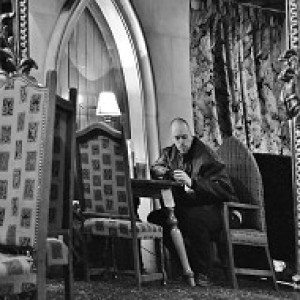The Dance Of The Great Powers
Somewhere in the annals of military history, someone once noted that the problem with strategists is they're always more concerned with how they should have fought the last war than how they're going to fight the next. Certainly in the feverish heat of August 1914, no one was prepared for the grinding attrition of trench warfare. If anything, the expectations of the most senior military figures in Europe for the first continental war in nearly half a century were that it would be a highly mobile affair, in which the fast and efficient movement of troops and supplies would be paramount, and numerical superiority of soldiers the deciding factor. The use of trenches and earthworks to hold a position - demonstrated in open battle as early as the American Civil War, and honed to deadly effect in the Boer War and Russo-Japanese War in the early twentieth century - was utterly dismissed by most generals, who believed that a trench could be easily overwhelmed by weight of numbers on favourable terrain. Thus, as war broke out in 1914, the great powers fielded barely-drilled conscripts in their millions, many dressed in uniforms which harked back to the days of Bonaparte - such as the French cavalrymen pictured above in plumed helmets and breastplates - with the intention of fighting pitched battles to the thunder of hooves and crackle of massed volley-fire. That long indian summer was to be the swansong of 19th century warfare.
To heap an extra layer of absurdity onto the archaic scenes playing out on the roads and railways of the continent, the entire course of the war was determined before a shot was even fired, by the words of a dead man. Alfred von Schlieffen had been German Chief of Staff until his death eighteen months earlier, and his legacy to the Kaiser was a comprehensive plan for a quick, decisive triumph over France, allowing a longer, more protracted war against France's Russian allies, into which Germany could steadily concentrate all of its resources, with the minor collateral damage of a few dead Belgians. Schlieffen was, broadly speaking, a strategy nerd; war was nothing to him but maps and numbers, fronts and flanks, objectives and obstacles. He was obsessed with Hannibal's encirclement of the Roman legions at Cannae in 216BC, and dreamed of performing such a feat on a modern battlefield. His idea of relaxation was to read volumes of military history aloud to his daughters. Had the board game RISK existed then, he'd no doubt have tormented the poor frauleins with demonstrations of how best to envelop Irkutsk in a pincer movement with only two red dice at your disposal.
Schlieffen's blind spots were blatant and numerous. Politics and diplomacy were alien to him; the idea that Belgium might resist invasion, or that other nations besides France might rush to its aid, were peremptorily dismissed. He had no consideration for logistics, or for the psychology of combat; Schlieffen's soldiers were wooden warriors who went where they were told at the speed they were told to, and then engaged the enemy until ordered to desist. The condition of their marching routes were immaterial. Their spirit and courage to attack was never diminished by the possibility of never again seeing their wives or their mothers; their ability to resist enemy onslaughts was never sapped by hunger or adverse weather. They would march for between twelve and twenty miles every single day. They would reach Paris within six weeks of the outbreak of war, and fight a single, decisive battle there, which they would win. They would accomplish all of this without diversion or delay, because Alfred von Schlieffen told them to.
Germany's implementation of the Schlieffen Plan on the 4th of August, and its correspondent violation of Belgian neutrality, meant that the right flank of their grand, sweeping arc - the part of the invasion force which had to move most rapidly and strike most effectively for the plan to work - would encounter a different enemy to the French armies Schlieffen had anticipated. Fulfilling its commitment to Belgium, this flank would be defended by the one army in Europe which didn't operate conscription, and didn't hold to a doctrine of numerical superiority as the decisive factor in battles. With a mere eighty thousand men in its ranks (to a million in German grey), and dedicated to its long-held belief in the power of fast, accurate fire from highly-disciplined troops, it would be the British Expeditionary Force in the path of the German advance.
- 0
- 0
- Nikon D3100
- 1/33
- f/5.6
- 55mm
- 720

Comments
Sign in or get an account to comment.


